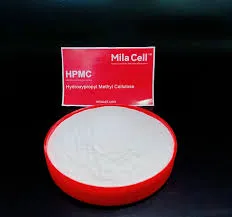
Гру . 23, 2024 05:05 Back to list
hydroxypropyl methyl cellulose cas no
Understanding Hydroxypropyl Methyl Cellulose Its Properties and Applications
Hydroxypropyl methyl cellulose (HPMC) is a versatile polymer that has gained significant attention across various industries due to its exceptional properties and multifunctional applications. With the CAS number 9004-65-3, HPMC is a cellulose ether derived from natural cellulose, which is modified to enhance its solubility and functionality. This article explores the properties, production, and various applications of HPMC, highlighting its importance in both industrial and consumer products.
Properties of Hydroxypropyl Methyl Cellulose
HPMC is a white to off-white powder that is odorless and tasteless. One of its most notable features is its ability to form gels and films when mixed with water. Depending on the degree of methoxy and hydroxypropyl substitution, HPMC exhibits varying solubility characteristics, which can be finely tuned to meet specific needs.
The viscosity of HPMC solutions is crucial in determining its performance in applications. The viscosity can be adjusted by altering the concentration of the polymer and the temperature of the solution. HPMC also possesses excellent thermal stability, making it useful in a variety of temperature-sensitive processes. Moreover, it is non-toxic and biodegradable, enhancing its attractiveness as an additive in eco-friendly products.
Production of Hydroxypropyl Methyl Cellulose
The production of HPMC involves the chemical modification of cellulose through a process called etherification. In this process, the natural cellulose is reacted with propylene oxide and methyl chloride, resulting in a polymer with hydroxypropyl and methyl groups. The specific ratio of these groups determines the properties of the final product. This versatility allows manufacturers to customize HPMC for diverse applications, from pharmaceuticals to construction.
Applications of Hydroxypropyl Methyl Cellulose
hydroxypropyl methyl cellulose cas no

HPMC is extensively used in various sectors, including pharmaceuticals, food, cosmetics, and construction.
1. Pharmaceuticals In the pharmaceutical industry, HPMC serves multiple roles as a binder, thickener, and film-forming agent in tablet formulations. It enhances the dissolution rates of drugs and helps control the release of active ingredients, making it a vital component in controlled-release formulations. Additionally, HPMC is used in ophthalmic preparations due to its ability to retain moisture and provide lubrication.
2. Food Industry HPMC is utilized as a food additive under the E464 designation. It acts as a thickening agent, emulsifier, and stabilizer in various food products. It helps improve the texture and mouthfeel of processed foods like sauces, dressings, and baked goods while being approved as safe for consumption.
3. Cosmetics In the cosmetics sector, HPMC is employed to enhance the texture and stability of products such as creams, lotions, and shampoos. Its film-forming properties allow for better adherence of products on the skin and hair, improving user experience.
4. Construction In construction, HPMC is incorporated into cement-based products such as tile adhesives, mortars, and plasters. It aids in water retention, improving workability and adhesion while preventing cracking during the drying process.
5. Personal Care HPMC is widely used in personal care products, providing stability and enhancing the performance of formulations like gels and lotions. Its non-irritating nature makes it suitable for sensitive skin applications.
Conclusion
Hydroxypropyl methyl cellulose is a remarkable polymer with a wide range of beneficial properties that make it indispensable in multiple applications. Its versatility, safety, and effectiveness continue to drive innovations across various industries. As demands for sustainable and effective materials increase, HPMC’s role is likely to expand, affirming its significance in both current and emerging markets. The adaptability and functionality of HPMC underscore its value, ensuring it remains a crucial component in numerous products that we encounter daily.
-
Versatile Hpmc Uses in Different Industries
NewsJun.19,2025
-
Redispersible Powder's Role in Enhancing Durability of Construction Products
NewsJun.19,2025
-
Hydroxyethyl Cellulose Applications Driving Green Industrial Processes
NewsJun.19,2025
-
Exploring Different Redispersible Polymer Powder
NewsJun.19,2025
-
Choosing the Right Mortar Bonding Agent
NewsJun.19,2025
-
Applications and Significance of China Hpmc in Modern Industries
NewsJun.19,2025







